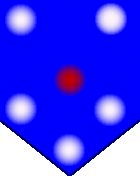The VK 13.03 prototype was a Panzerspahwagen, studied by MAN and built afterwards by MAN and Henschel under the name of Panzerspahwagen II Ausf. L "Luchs" (Lynx) from September 1943 to January 1944 (104 units). The Sd.Kfz.123 was the final version of the Panzer II, largely based on previous models. It was up-armored and fitted with the interleaved wheels and new tracks developed for the semi-experimental Ausf. G. It also had a new, more powerful (180 bhp) Maybach HL66P engine, coupled with a ZF Aphon SSG48 gearbox, which gave this model excellent performance, achieving 60 km/h (37 mph) road and 42 km/h (26 mph) cross-country. The new rearranged hull was fitted with bigger fuel tanks. Range was increased to 290 km (180 mi). The hull superstructure, chassis, drivetrain, turret, were all modified. Armour was raised to 30 mm (1.18 in) on the sides and front. The weight soared to 11.8 tons.
The crew-size was now four. This meant the commander could focus on his own tasks, and he also had a newly designed cupola. The radio (FuG12 MW receiver and 80-watt transmitter) had a greater range and intercom was fitted. The gun was still the 20 mm (0.79 in) KwK 38 L55, but with 320 rounds, including many AP rounds. The secondary MG-34 was relocated in the hull. The Luchs fought until the end of the war, both on the Eastern and Western front, in Panzer-Aufklarungs-Abteilungen (armored reconnaissance units) affected to Wehrmacht and SS units.


















